SISCO optical power meters are mainly used for optical signal power measurement, optical filber line loss test, optical device insertion loss test, optical filber faultdetection, optical fiber breakpoint location, end-to-end optical filber identification and so on. These portable opm optical power meters are designed to meet the ergonomic requirements and advanced cold molding technology is adopted to make them beautiful and durable.
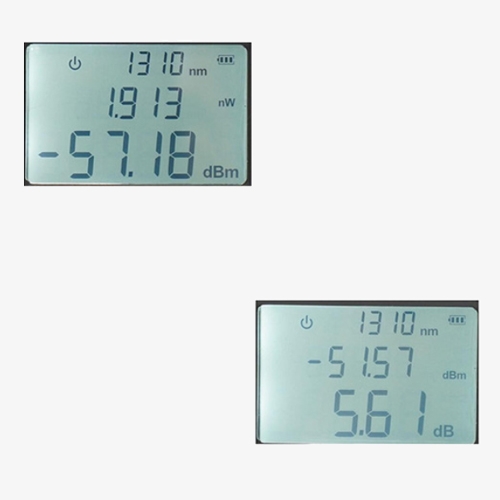
Self-Calibration and Dual Display Functionality
- Supports self-calibration function: Press "ZERO" + "LIGHT" at the same time to enter the calibration mode, and the LCD displays "CAL" to calibrate the measurement error.
- The linear mW and nonlinear index dBm are displayed simultaneously:
It is more convenient for users to select data suitable for reading and comparison, and it is also convenient for mutual comparison without midway conversion.
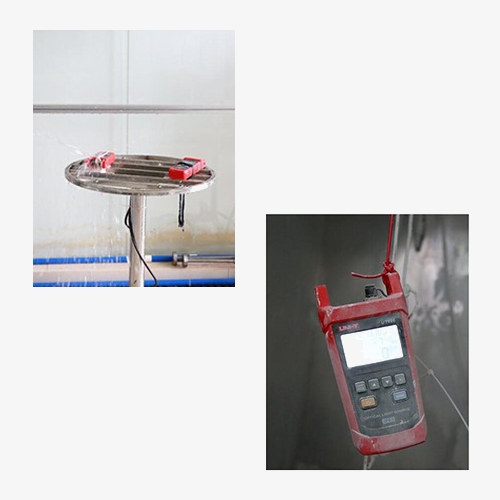
IP65 Waterproof Optical Power Meter with Multi-Wavelength Support
- IP65 waterproof and dustproof: Adopting industrial waterproof and dustproof design, with IP65 waterproof and dustproof level, it can be compatible with more complex and harsh use environments.
- Optical power meter + light source function: Supports 8 different measurement wavelengths, as well as continuous and pulsed stable red light output.
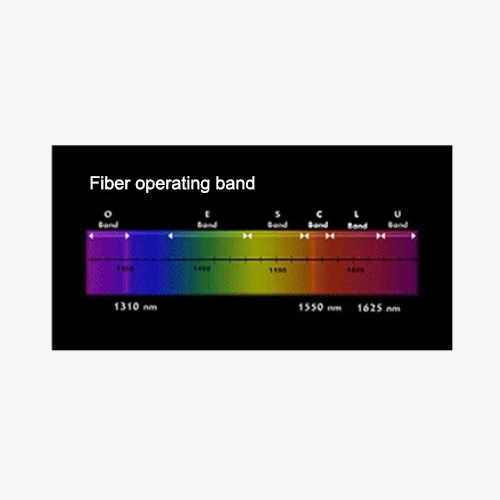
8-Wavelength Optical Meter Compliant with EN61326 Standards
- Conforms to EN61326-1:2013 and EN61326-2-2: 2013 standards.
- 8 wavelengths to choose from: There are 8 wavelengths to choose from, 850nm, 980nm, 1300nm, 1310nm, 1490nm, 1550nm, 1625nm, 1650nm, basically covering all wavelengths of light transmitted in optical fibers.
Applications
Fiber optical power meter can be widely used in optical cable construction and maintenance, optical fiber communication, optical fiber sensing, CATV and other fields. It is mainly used for the measurement of continuous optical signal power, optical fiber line loss test, optical device insertion loss test, optical fiber breakpoint location, end-to-end optical fiber identification, etc.

Optical Fiber Communicate

Optical Fiber Sensing
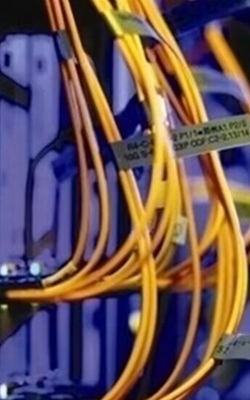
CATV
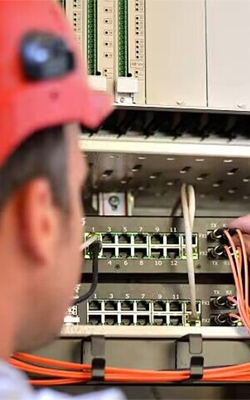
Optical Cable Const.&Maint.
| Model | SISCO-PQA-UT697 | |
| Function | Description | |
| Optical Power Meter | Wavelength range | 800nm~1700nm |
| Calibrated wavelength | 850nm, 980nm, 1300nm, 1310nm,1490nm, 1550nm, 1625nm, 1650nm | |
| Measurement range | -70~10dBm | |
| Uncertainty | ±5% | |
| Display resolution | Linear: 0.1%, logarithmic: 0.01dBm | |
| Connector | Univeral connector FC/SC/ST | |
| Detector type | InGaAs | |
| Visual Fault Indicator | Wavelength | 650nm±10nm |
| Power | 10mW (measurable optical fiber length: 8~10km) | |
| Mode | Continuous mode and pulse mode | |
| Connector | Univeral connector FC/SC/ST | |
| Light Source | Wavelength | Dual wavelength: 1310nm, 1550nm |
| Typical output optical power | -4dBm | |
| Adjustable output optical power | -4dBm, -6dBm, -8dBm, -10dBm | |
| Internal modulation | 0Hz/270Hz/1000Hz/2000Hz | |
| Luminescent device | FP-LD | |
| Optical interface | FC/PC | |
| Applicable optical fiber | SM/MM | |
| General Characterisitics | ||
| Power | 1.5V battery (LR6) x 3 (not including) | |
| Display | 63mm x 40mm | |
| Color | Red and grey | |
| Net Weight | 300g | |
| Size | 189mm x 87mm x 45mm | |
| Flashlight | √ | |
| Low Battery Indication | √ | |
| Auto Power Off | √, Auto power off after 10 minutes of inactivity | |
| IP Rating | IP65 | |
| Drop Test | 2m | |
| Operating Temperature and Humidity | 0°C-40°C; 20~75%RH | |
| Storage Temperature and Humidity | -10°C~50°C; 10~90%RH | |
| Altitude | ≤2000m | |
| Certification | CE, RoHS, IP65 | |
Dimension
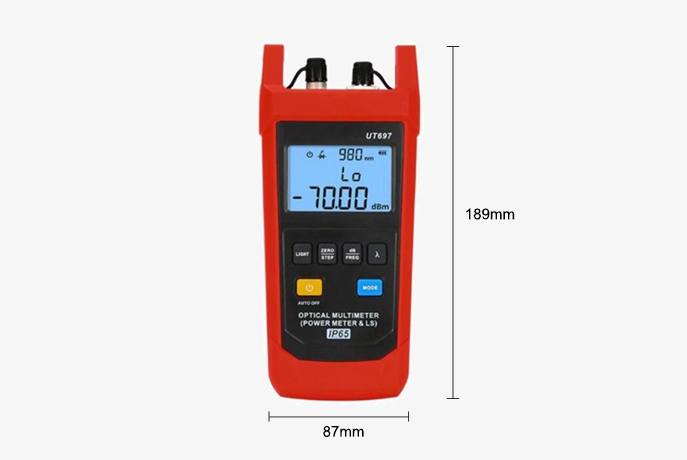
Packing List
- 1 x Fiber optic power meter
- 1 x Cloth bag
- 1 x SC connector for light source
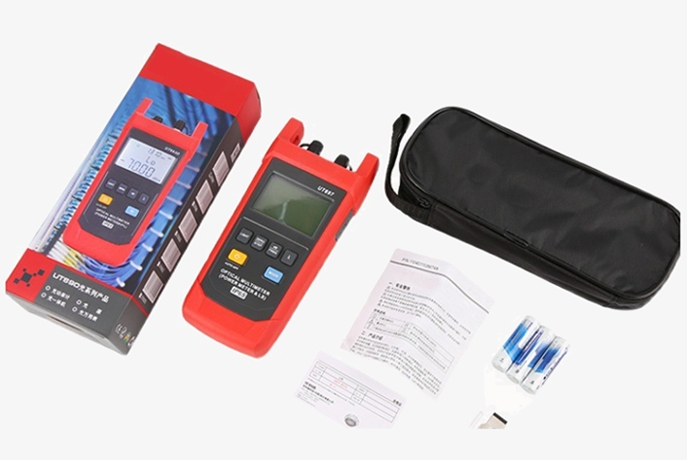
Q1: What do EN61326-1:2013 and EN61326-2-2:2013 compliance standards mean?
A1: EN61326-1:2013 and EN61326-2-2:2013 are European standards that define the requirements for electromagnetic compatibility (EMC) for electrical equipment used in industrial and laboratory environments. Compliance with these standards ensures that a device, such as a fiber optic power meter, can operate without causing or being affected by electromagnetic interference in these settings. EN61326-1:2013 covers the general requirements for all equipment, while EN61326-2-2:2013 provides additional requirements specific to test and measurement equipment, ensuring reliable and accurate performance in environments with potential electromagnetic disturbances.
Q2: Why is wavelength selection important in a fiber optic power meter?
A2: Wavelength selection is crucial in a fiber opm because different optical signals are transmitted at specific wavelengths, depending on the type of fiber and the application. Accurate measurement of the optical signal's power requires the power meter to be tuned to the correct wavelength, as signal strength can vary significantly across different wavelengths. Incorrect wavelength selection can lead to inaccurate measurements, potentially compromising the performance of the network. Therefore, having a power meter that supports a range of wavelengths ensures versatility and precision in various testing and troubleshooting scenarios within fiber optic systems.
Q3: What wavelengths do fiber optic power meter typically measure?
A3: Fiber optic power meter typically measure a range of wavelengths commonly used in fiber optic communications. The most standard wavelengths include 850nm, 980nm, 1300nm, 1310nm, 1490nm, 1550nm, 1625nm, and 1650nm. These wavelengths cover the primary bands used for data transmission in various types of optical fibers, including multimode and single-mode fibers, ensuring that the power meter can accurately measure the signal strength across different fiber optic networks.
Tips: How does a fiber optic power meter work?
A fiber optic power meter works by measuring the optical power of light transmitted through a fiber optic cable. The device uses a photodetector to capture the light signal, which then converts the optical energy into an electrical signal. This electrical signal is proportional to the power of the light entering the meter. The power meter processes this electrical signal and displays the optical power level, typically in units such as decibels-milliwatts (dBm), decibels (dB), or milliwatts (mW). The user selects the appropriate wavelength on the meter to match the wavelength of the light being measured, ensuring accurate readings. This process allows technicians to verify signal strength, troubleshoot issues, and ensure the fiber optic network is functioning correctly.
Thank you for buying industrial test and measurement equipment on SISCO.com, all products sold by SISCO and the partner cover a 12 months warranty, effective from the date of receiving the products.
What is covered?
SISCO is responsible for providing free spare parts, and free technical support to assist the customer to repair the defective products until the problem is solved.
What is not covered?
- Product purchased from anyone other than a SISCO store or a SISCO authorized reseller.
- Expendable parts.
- Routine cleaning or normal cosmetic and mechanical wear.
- Damage from misuse, abuse or neglect.
- Damage from use of parts other than SISCO approved.
- Damage from use outside the product’s usage or storage parameters.
- Damage from use of parts not sold by SISCO.
- Damage from modification or incorporation into other products.
- Damage from repair or replacement of warranted parts by a service provider other than a SISCO authorized service provider.
- Damage caused by the application environment not meeting the product usage requirements and the failure to perform preventive maintenance.

